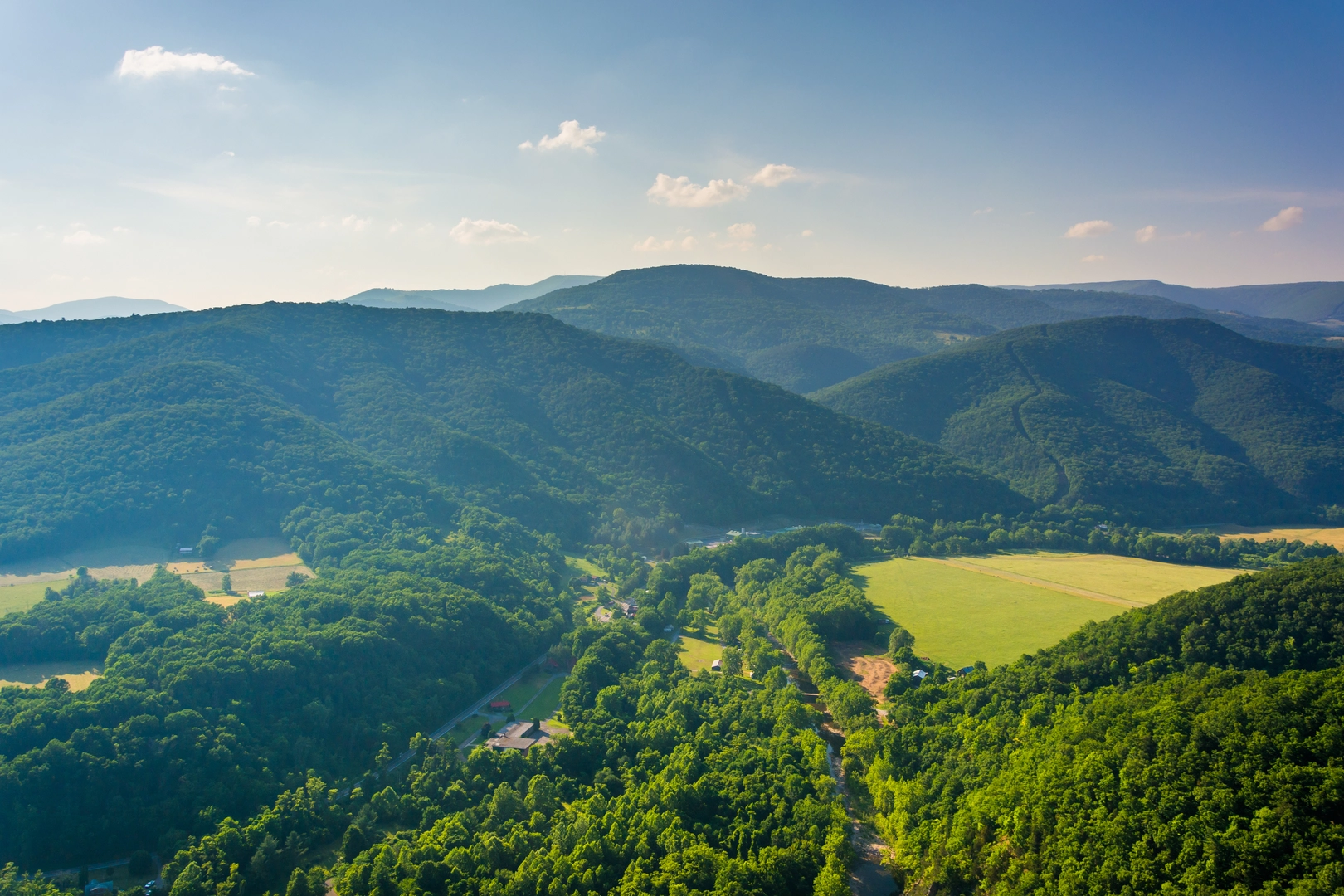Download
Preview
Add to list
More
129.3 km
~6 days
473 m
Multi-Day
“Embark on a gentle yet historic trek through West Virginia's splendor along the Greenbrier River Trail.”
The Greenbrier River Trail carves a scenic 129 km (80 miles) path through the heart of West Virginia, following the course of the Greenbrier River. With an elevation gain of approximately 400 meters (1,312 feet), the trail offers a relatively gentle journey through a region rich in natural beauty and history.
Getting to the Trailhead
The northern trailhead is located near the town of Cass, close to Greenbrier County. To reach the starting point by car, hikers can navigate to Cass Scenic Railroad State Park, which is a significant landmark in the area. For those opting for public transport, options may be limited, but regional bus services can get you to nearby towns, from where you may need to arrange a taxi or shuttle to the trailhead.
Navigating the Trail
The Greenbrier River Trail is a point-to-point trail, meaning hikers can start at either end or even tackle sections of the trail for shorter hikes. The trail is well-marked, but carrying a reliable navigation tool like HiiKER is recommended to keep track of progress and nearby points of interest.
Historical Significance
The trail itself is a converted rail trail, once part of the Chesapeake & Ohio Railway. As you hike, you'll encounter several historical markers and remnants of the railroad era, including old train depots and mileposts. The trail also passes through several small towns that played significant roles during the logging boom in the early 20th century.
Landmarks and Nature
The Greenbrier River Trail is enveloped by the lush forests of the Appalachian Mountains, offering a serene backdrop for your hike. The trail crosses 35 bridges and passes through two tunnels, providing unique vantage points and photo opportunities. The Droop Mountain Tunnel and the Sharp's Tunnel are notable for their historical and architectural interest.
Wildlife is abundant in the area, with chances to spot white-tailed deer, beavers, and a variety of bird species. The river itself is a habitat for fish and occasionally offers sightings of river otters.
Seasonal Considerations
The trail is accessible year-round, but each season offers a different experience. Spring brings wildflowers and rushing waters, summer is lush and green, fall features a spectacular display of foliage, and winter presents a quiet, snow-covered landscape. It's important to prepare for the season, with layers for cold weather and adequate water and sun protection for the warmer months.
Amenities and Camping
Along the route, there are numerous campsites and picnic areas for those looking to extend their adventure. Primitive camping is available, and some sites are equipped with amenities such as tables and restrooms. It's advisable to plan your stops in advance and be aware that amenities are more sparse in certain sections of the trail.
Safety and Etiquette
As with any trail, it's important to practice Leave No Trace principles to preserve the natural environment. Be mindful of trail etiquette, particularly when sharing the path with cyclists and equestrians, who also frequent the Greenbrier River Trail.
In conclusion, the Greenbrier River Trail offers a unique blend of natural beauty, historical interest, and recreational opportunities. Whether you're looking for a multi-day adventure or a leisurely day hike, this trail provides an enriching experience for hikers of all levels.
What to expect?
Activity types
Comments and Reviews
User comments, reviews and discussions about the Greenbrier River Trail, West Virginia.
4.63
average rating out of 5
24 rating(s)

